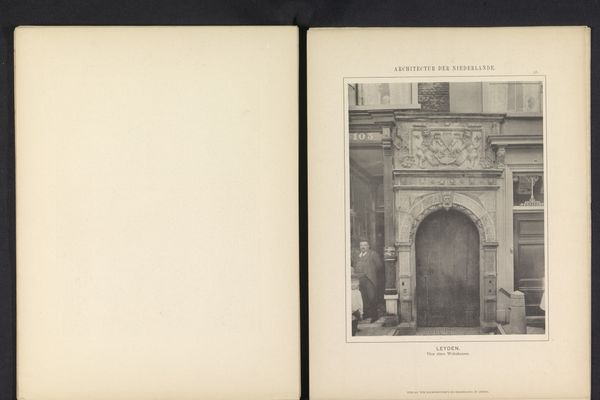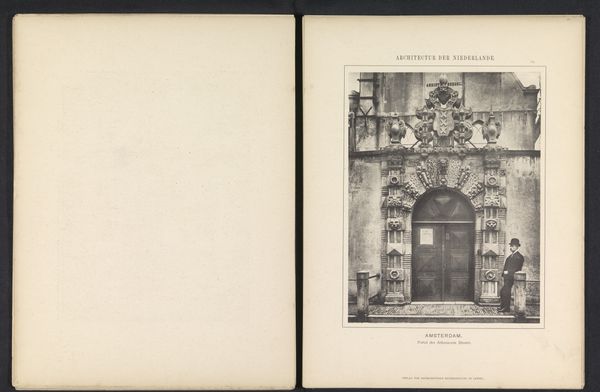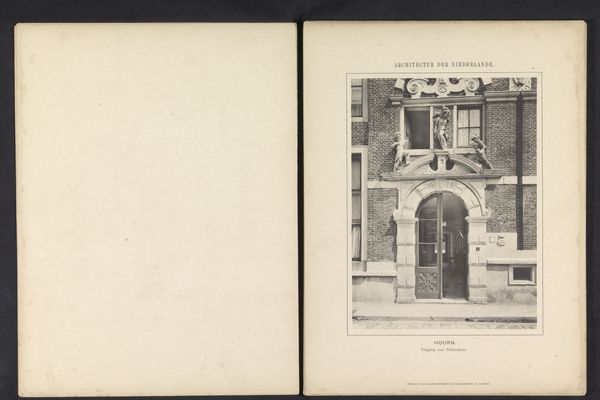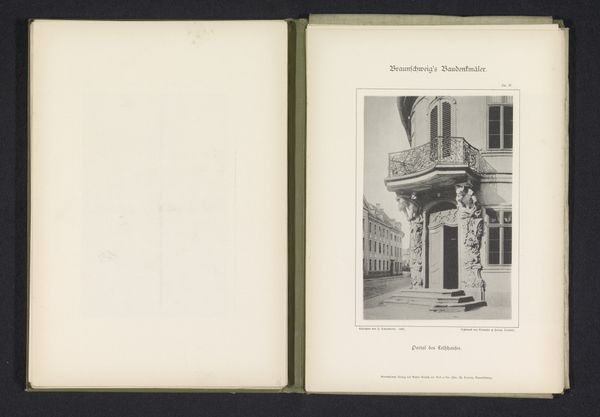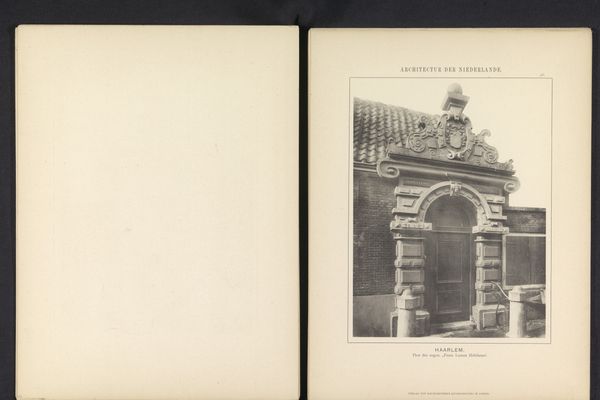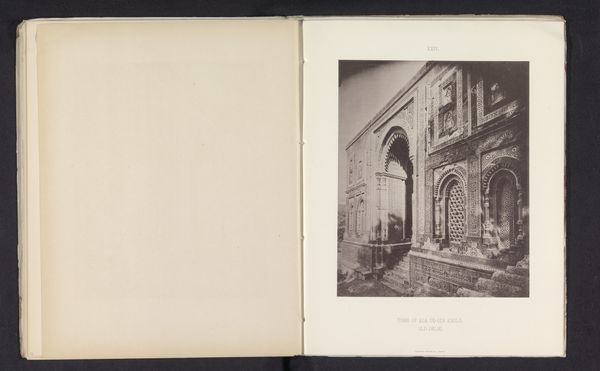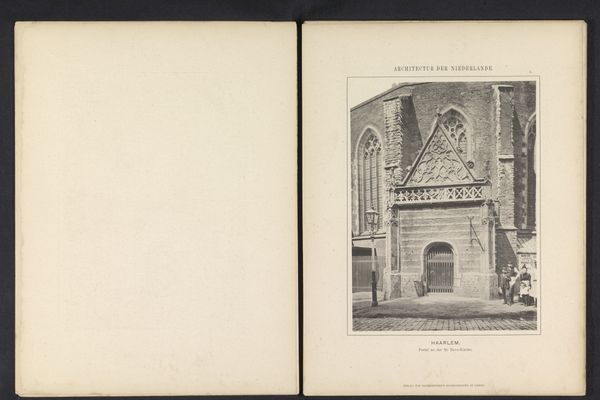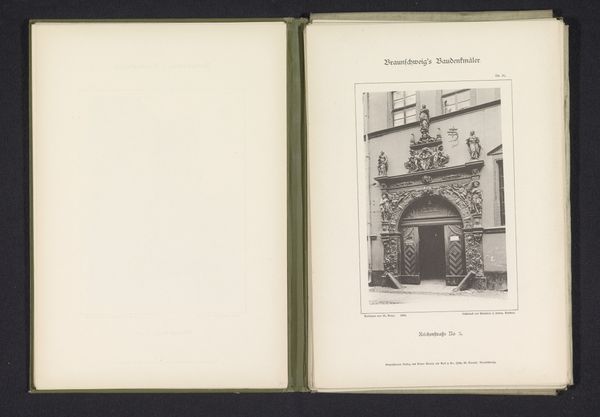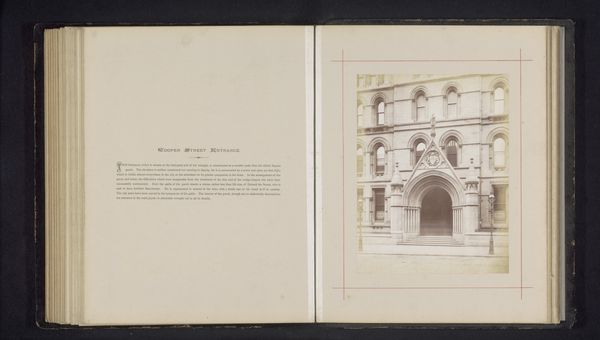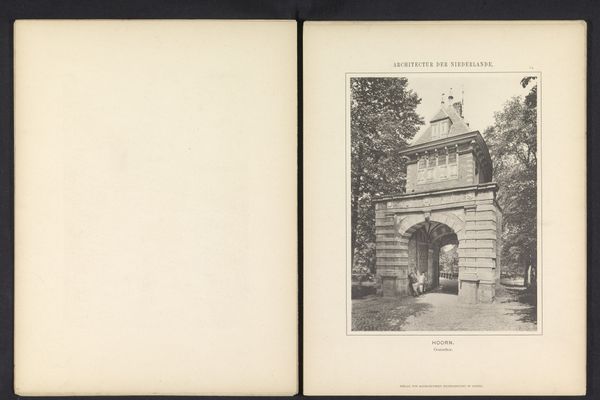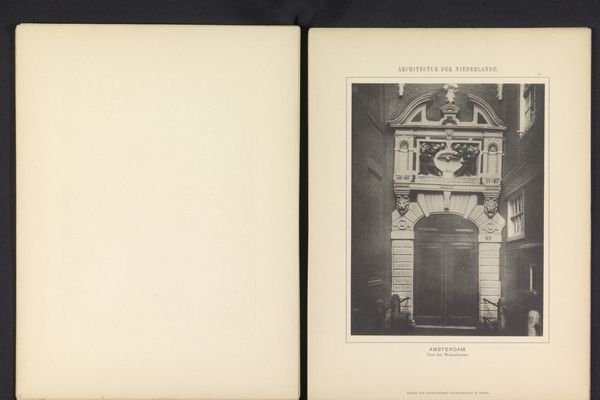
Gezicht op de trap en een poort van de Wijnhuistoren in Zutphen before 1894
0:00
0:00
anonymous
Rijksmuseum
Dimensions: height 257 mm, width 197 mm
Copyright: Rijks Museum: Open Domain
Curator: Before us, we have a photographic print entitled "Gezicht op de trap en een poort van de Wijnhuistoren in Zutphen," which translates to "View of the stairs and a gate of the Wijnhuistoren in Zutphen." This was captured at some point before 1894. Editor: The high contrast gives the stonework an almost palpable solidity, even a kind of austere beauty, though the dark entrance is a bit forbidding. Curator: Yes, and consider that this image forms part of a larger series called Architectuur der Nederlande or, "Architecture of the Netherlands," designed to record and disseminate examples of Dutch architectural achievements, particularly Neo-classicism. It demonstrates a deliberate choice to legitimize a specific aesthetic through accessible means of dissemination. Editor: Exactly. By placing architecture, especially that of a neo-classical style, in a context that promotes nationalism, this photograph subtly advocates for a return to the “Golden Age” by visually celebrating the past. Curator: Notice the symmetry in the archway, those perfect rectangles which is punctuated by the asymmetry of the stairs climbing on the right-hand side. Editor: Which only works to underline the role of who is 'let in'. The imposing nature of that heavy door – whom is it keeping out and why? The very design reinforces existing hierarchies in subtle and less-than-subtle ways, impacting who has access to what. Curator: It’s also significant that photography, even at this early stage, played a crucial role in shaping perceptions of national identity and architectural style. This image would have circulated widely as an affirmation of cultural values. Editor: That's so powerful when considering the limitations that many communities of color still experience when entering artistic spaces or even studying art history within our universities! What’s excluded shapes perspectives as much as what’s highlighted. Food for thought! Curator: It truly is. Considering how it engages in larger themes surrounding aesthetics, power structures, and their dissemination provides fascinating new insight into historical events!
Comments
No comments
Be the first to comment and join the conversation on the ultimate creative platform.

